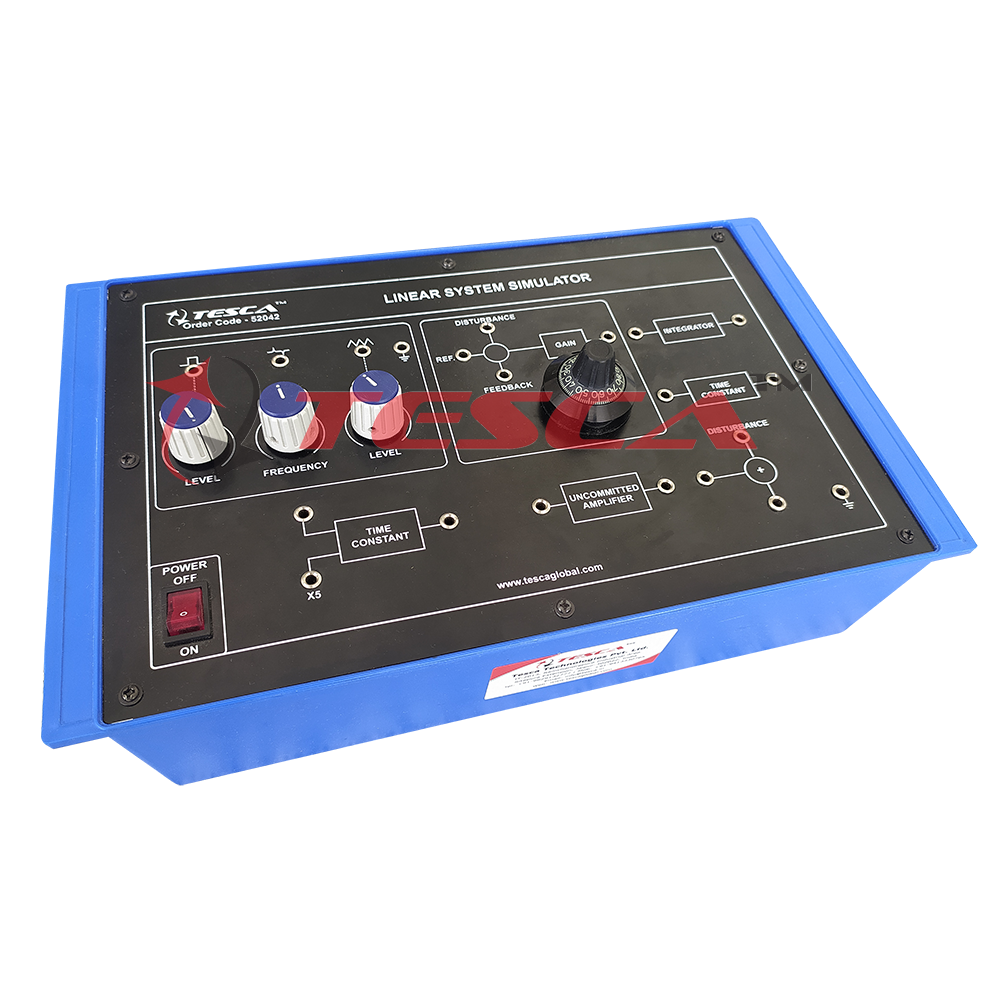Table of Contents
Linear systems are everywhere – they regulate the temperature in our houses and power complex machines. These systems respond to changes in an expected way, which makes them very important in many gadgets and industrial procedures. But, creating and perfecting these systems can be complicated. It would help if you had a good grasp of intricate mathematical models and were prepared for multiple design adjustments.
With the capacity to optimize system performance, assess design alternatives, and forecast system behavior, linear system simulators have become indispensable tools for various industries, including aerospace, automotive, telecommunications, and energy.
Irrespective of whether you are an engineer, scientist, or researcher, comprehending the capacities of linear system simulators is indispensable for devising and upgrading the machinery and procedures that influence our surroundings.
All about Linear System Simulator:
Linear system simulators are critical in improving performance, assessing design options, and forecasting system behavior in various industries. In this blog, we will learn about every detail, exploring the features, benefits, and applications of linear system simulator tools.
Uses of Linear System Simulator Trainer Board:
A linear system simulator trainer board is essential for learning about and experimenting with linear control systems. Here are some of the main uses of such a board:
The most basic use is for students and engineers to learn the fundamentals of linear control systems. The board allows you to create simple linear models like proportional, integral, and derivative controllers and see how they respond in real-time. You can adjust the control parameters and immediately observe the effect on the system’s response. This type of hands-on experimentation helps cement the theoretical concepts.
The board also lets you design and test different types of linear controllers. After learning the basics, you can move on to creating proportional-integral-derivative (PID) controllers, lead-lag compensators, and state feedback controllers. The board provides an environment where you can rapidly iterate on your controller designs and test them without needing actual hardware.
To evaluate the stability of a system, the board offers the functionality to craft mathematical models of dynamic systems and employ various control algorithms. By visually monitoring the system response in real-time, individuals can determine if the closed-loop system is steady, under-damped, or over-damped. It allows for enhancing controller design and attaining desired performance levels.
The trainer is vital in enabling learners to grasp sophisticated control methods such as observer design and state estimation. The board seamlessly integrates external sensors by incorporating input/output ports and analog-to-digital converters. This establishes an ideal framework for conducting experiments centered on Luenberger observers, Kalman filters, and other state estimation methodologies.
A linear system simulator board is of immense worth in furnishing students and engineers with practical expertise in linear control systems. The hands-on experimentation and quick prototyping capabilities further augment the learning process while offering a more profound comprehension of intricate control methods.
Working Principle of Linear System Simulator Trainer Board:
If you want to understand linear systems and circuits, the Linear System Simulator Trainer Board is the perfect tool! This board simulates real-life circuits and systems through electronic components, giving you a hands-on learning experience. You’ll be able to experiment with various linear circuits and systems and see how they work firsthand.
The board has resistors, capacitors, inductors, switches, potentiometers, and more. You can connect these components in different configurations to simulate simple RC, RL, and RLC circuits. An operational amplifier acts as a comparator and inverting/non-inverting amplifier to add even more complexity to your experiments.
It uses a signal generator to provide input to the circuit. This generator produces sinusoidal signals at different frequencies, allowing us to change the input signal’s frequency and amplitude and see how the output reacts. Plus, we can easily view the input and output waveforms on LCD screens using oscilloscopes.
By trying different circuit configurations on the trainer board, we’ll get hands-on experience with important linear systems concepts such as time constants, damping ratios, natural frequency, resonance, and frequency response.
10 Components of Linear System Simulator Trainer Board:
The Linear System Simulator Trainer Board is an educational tool that helps students learn about linear systems and their components. The board consists of the following parts:
1. Op-amps:
The board contains multiple operational amplifiers students can experiment with and learn about their characteristics and applications. Op-amps construct the other parts of the circuit.
2. Power Supply:
The board has its regulated power supply unit to provide the required voltage to different circuit sections. Students can vary the power supply voltage to analyze its effects.
3. Signal Generator:
The signal generator creates different waveforms like sine, square, and triangle. You can also use it to adjust the strength and frequency of the input signal.
4. Resistors and Capacitors:
The board has various resistors and capacitors of varying values, which students can use to design diverse linear circuits to analyze their responses.
5. Input Section:
In the input section, the user plays around with knobs, switches, and jumpers to select the input signal they want and set the voltage and resistance just right.
6. Linear Circuitry:
The trainer board incorporates various linear circuit elements, including operational amplifiers, resistors, capacitors, inductors, and transformers. These components simulate diverse linear system circuits to facilitate students’ learning.
7. Output Section:
In the output section, you’ll find an oscilloscope and voltmeter to help you measure your circuit’s output voltage and frequency.
8. Breadboard:
It enables students to create their circuits and experiment with various circuit configurations.
9. Feedback Elements:
The board contains potentiometers and switches that students can use to provide positive and negative feedback on the circuits. This allows them to study the effects of feedback on performance.
10. Control Section:
The control section of the trainer board is equipped with potentiometers, switches, and buttons that students can utilize to regulate the gain, frequency response, and other circuit parameters.
Liner System Simulator Trainer Board Setup:
The linear system simulator trainer board is useful for gaining practical knowledge of liner hanger systems. Setting up this board involves several steps to ensure proper functioning and safety. The main steps for setting up the linear system simulator trainer board are:
- Inspect all components for any damage or defects. This includes checking the tubing, liner hanger, setting tool, and other accessories for cracks, dents, corrosion or other issues that may impact performance.
- Mount the tubing in the holder and secure it properly using clamps or braces. Ensure the tubing is centered and well supported to avoid movement during operation.
- Attach the liner hanger to the bottom of the tubing and adjust its position to the required depth. Lock the liner hanger in place once the proper depth is achieved.
- Connect the hydraulic hoses to the hydraulic power unit from the setting tool. Inspect all hose connections to ensure they are tight and will not leak during pressurization.
- Fill the hydraulic power unit reservoir with the recommended hydraulic oil. Check that there are no air bubbles in the system.
- Perform a functionality test by pressuring the setting tool and checking it operates properly. Make any adjustments or fixes before proceeding.
- Secure all loose parts and components. Make sure the work area is clean and organized.
- Review safety guidelines and wear all required personal protective equipment to prevent mishaps.
- Conduct a final check of the entire setup before activating the linear system simulator trainer board.
Types of Linear System Simulator Trainer Board:
Several liner system simulator trainer boards are available for engineers and technicians working with liner systems.
The most fundamental trainer boards are composed of essential physical components, such as valves, switches, and gauges, replicating the arrangement of an authentic liner system. These physical trainers allow users to gain familiarity with the layout and operation of liner systems minus any potential damage to an existing system.
More sophisticated trainer boards incorporate electrical and electronic components, which simulate functionality that closely resembles that of an authentic liner system. Such electrical trainers contain programmable logic controllers, sensors, actuators, and other features, which can be wired together to model an actual system. These trainers allow users to test control logic, calibrate sensors and resolve issues within a safe and secure environment.
The most advanced tools are computer- and software-defined trainer boards for linear system simulation. These sophisticated software trainers create a virtual representation of the entire liner system on a computer screen, which allows users to interact with various components such as pumps, valves, and more.
Liner System Simulator Trainer Board Price:
The cost of the Linear System Simulator Trainer Board depends on the manufacturer, model, and specifications available. The price is between 7000-30000 Indian rupees to guarantee that you obtain the optimal value for your investment, comparing prices from various suppliers and manufacturers is advisable. Moreover, it is vital to contemplate the product’s quality and durability while finalizing your purchase decision.
Tesca Global Liner System Simulator Trainer Board:
The Tesca Global Linear System Simulator Trainer Board is a highly adaptable simulated system that caters to both open-loop and closed-loop systems for time domain analyses. This advanced platform enables smooth and practical evaluation of linear control systems, eliminating any complexities associated with electronic circuitry and its configuration.
The board consists of a range of built-in features, such as square wave and triangular wave generators, error detector cum gain amplifier, integrator, two-time constants, disturbance amplifier, uncommitted amplifier, and DC power supply, that facilitate ease of testing and experimentation.
Furthermore, the board boasts functional blocks depicting onboard mimics, onboard signal conditioning circuitry, and abundant informative learning material. The technical details of the board include a power supply of 230V+5%, 50Hz, 4mm banana sockets for interconnections, power consumption of approximately 10VA, operating conditions of 0-40°C and 85% RH, dimensions of W 340 x H125 x D210, and a weight of roughly 1.25kg.
This trainer board is aptly suited for conducting experiments such as the open-loop step response of first-order systems, the closed-loop step response of first, second, and third-order systems, disturbance rejection, and any additional necessary experiments.








Add comment